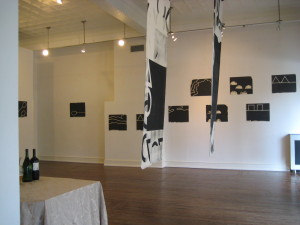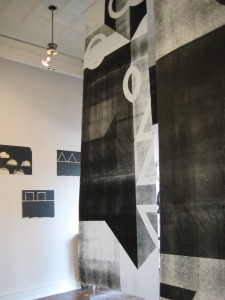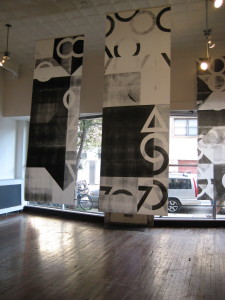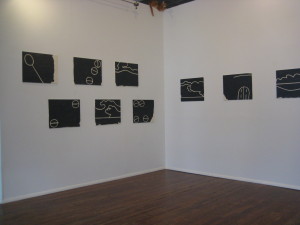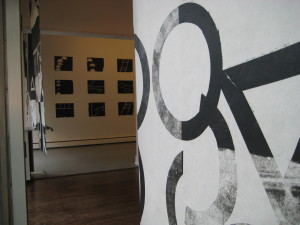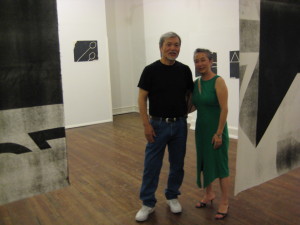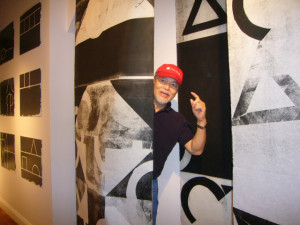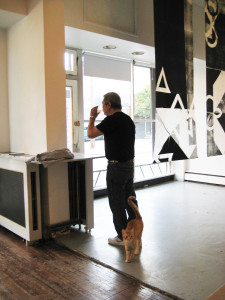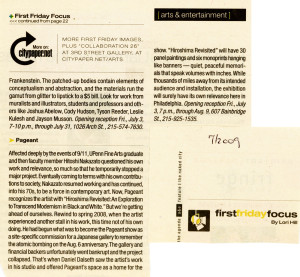Hiroshima Revisited – Black Rain
July 3 – Aug. 9, 2009; Oct. 10 – 16, 2009
“…I revisited Hiroshima, and read the letters that were exchanged among U.S. Government officials and researchers involved with the manufacturing and testing of the A-bomb at the Hiroshima Peace Museum which caused me be taken aback. …”
“… Juxtaposing my own war and post-war experience, anti-nuclear weapons stance as the subject for my studio work was inevitable.”
Hitoshi Nakazato
Black Rain Series I & II
There was a period in which I believed that all expressions from the traditional to contemporary aesthetic issues could be contained within simply drawn lines and painted fields on canvas. There was a period in which to attract more viewers of these Minimalist’s works, partial framing was attached as quotation marks on the edge of the canvases, or horizontally elongated canvases were intentionally used. There was a period in which diptychs – two canvases – were attached to obtain the effect of juxtaposition and eclectic tension. There was a period in which circle, triangle, and square of Sengai (1750-1835) were used as painterly vocabulary for the Line Outside (written sengai as a homonym in Japanese) series, in an attempt to reach beyond the known. There was a period in which Monad, the philosophy from the Greeks to early 14th century were used as a metaphor for the painterly process.
These are the footprints in my Modernist search and exploration for my own realm of expression. My studio attitude was to avoid focusing on personal matters, in my attempt to reach the Modernist’s pinnacle as the flag bearer of the avant-garde.
Ten years ago, due to a request from a museum to reduce shipping expense, I started to work on large-format paper, which resulted with a series of works, 30 inches in width and 35 feet in horizontal length. In this same series, there are two sets of paintings with same width but 50 meters long with one consecutively drawn 400-meter line. The initial reason to reduce expense became irrelevant and the works became so large that their entirety could not be view in my studio.
I questioned what subconscious reasons there were for these over-sized works. Then, it came to mind in a flash. Hidden underneath many layers of memory was the backyard of a traditional indigo dye shop, my mother’s home, with stretched dyed material for kimonos, and myself running through the rows in search of my mother. My avant-garde work intersected with my oldest visual memory of almost 70 year ago. The discovery that there was an original-scape, which existed beneath my new works brought tears to my eyes and moved me most deeply.
It was after this experience that I revisited Hiroshima, and read the letters that were exchanged among U.S. Government officials and researchers involved with the manufacturing and testing of the A-bomb at the Hiroshima Peace Museum which caused me be taken aback. I accepted the offer of a one-person show that would open on August 6th of this year, the day of the Peace Memorial Service. Juxtaposing my own war and post-war experience, anti-nuclear weapons stance as the subject for my studio work was inevitable.
Picasso’s monochromatic Guernica was envisaged, and with the aim to create a black and white series, it began as a process of painting images that came to mind on small panels. I received a critique calling them “frames from a movie film.” The series to celebrate the new century in 2001 which was continued despite 9/11 and the ambivalence I felt about the role of art in society became the Black Rain Series.
Hitoshi Nakazato
September 11, 2009

